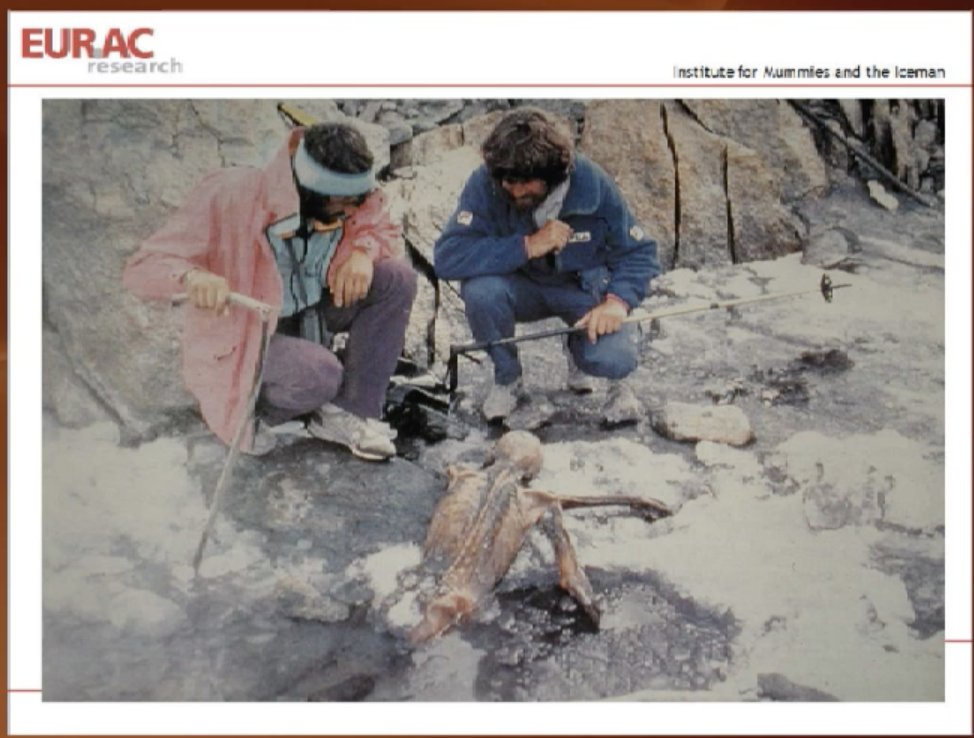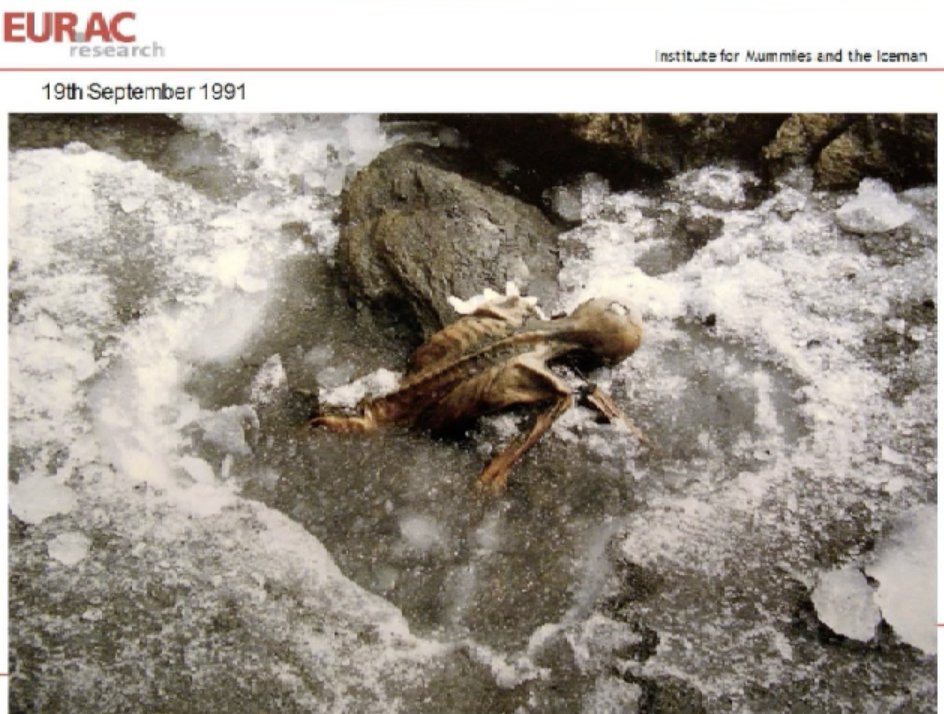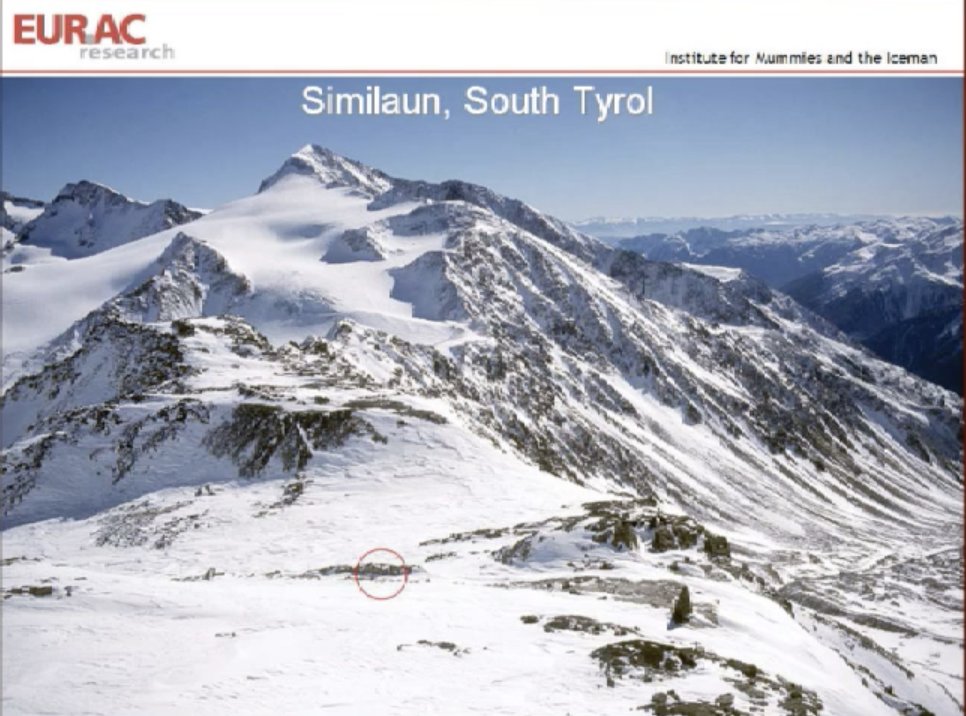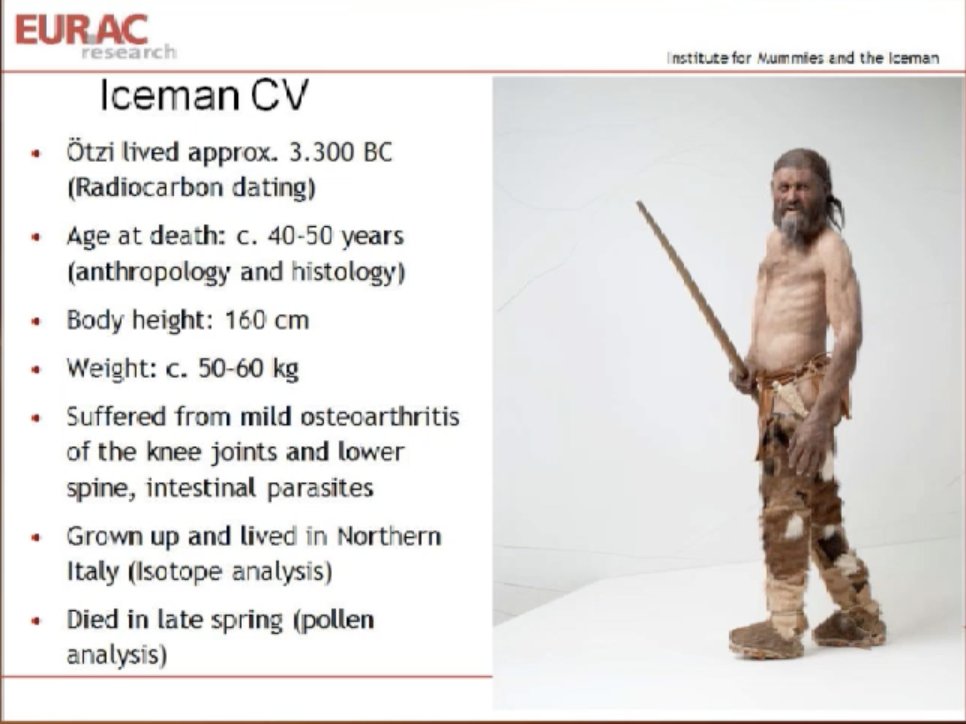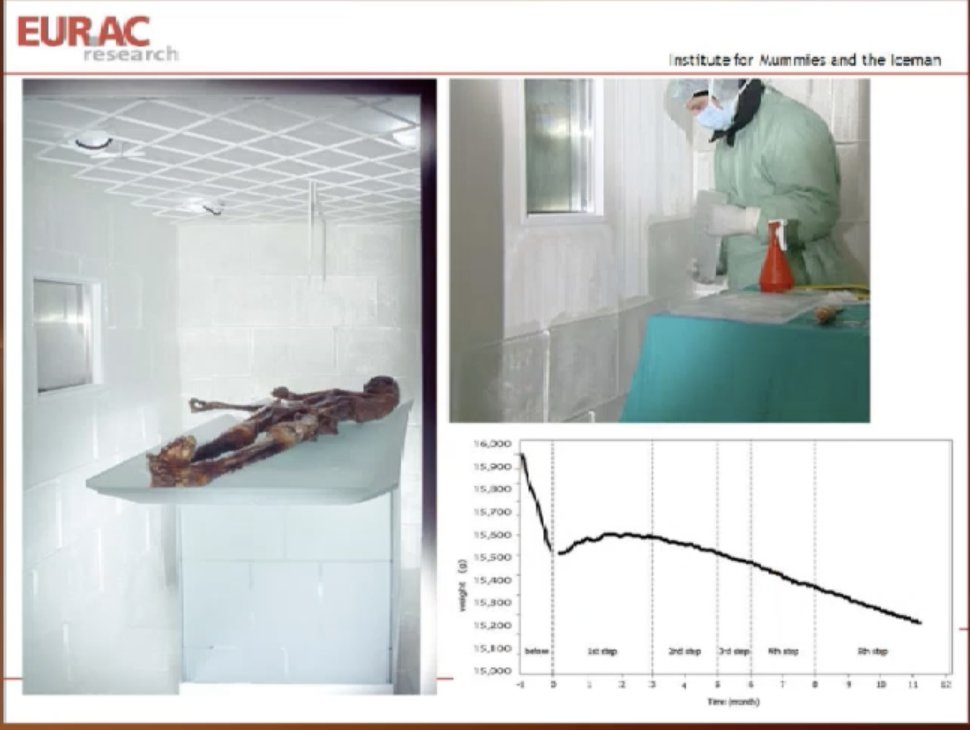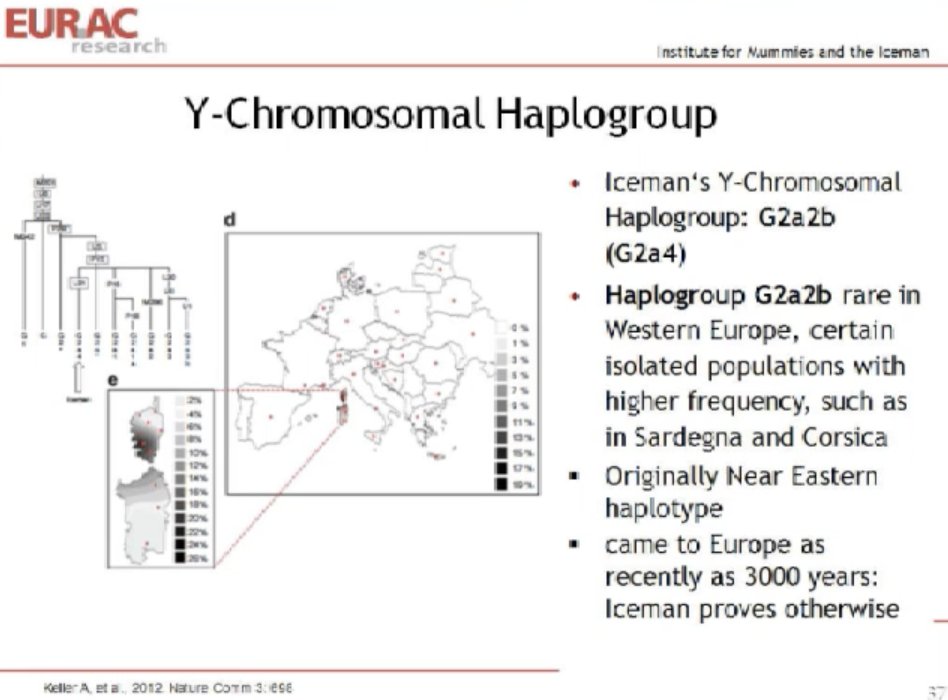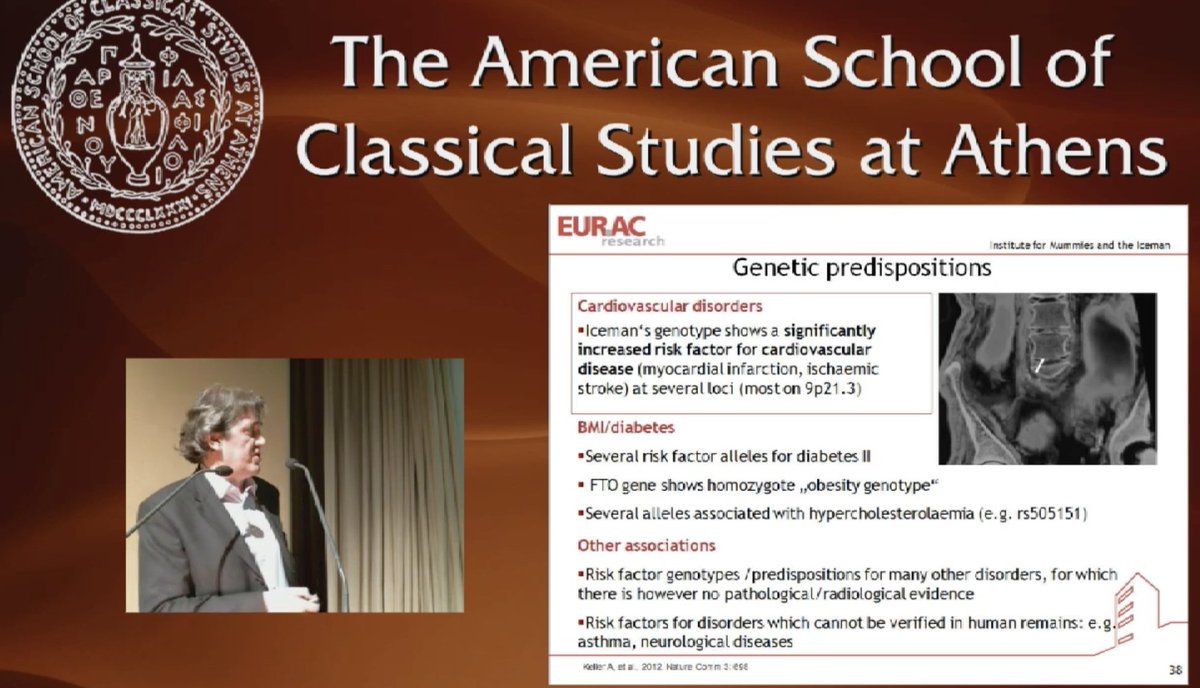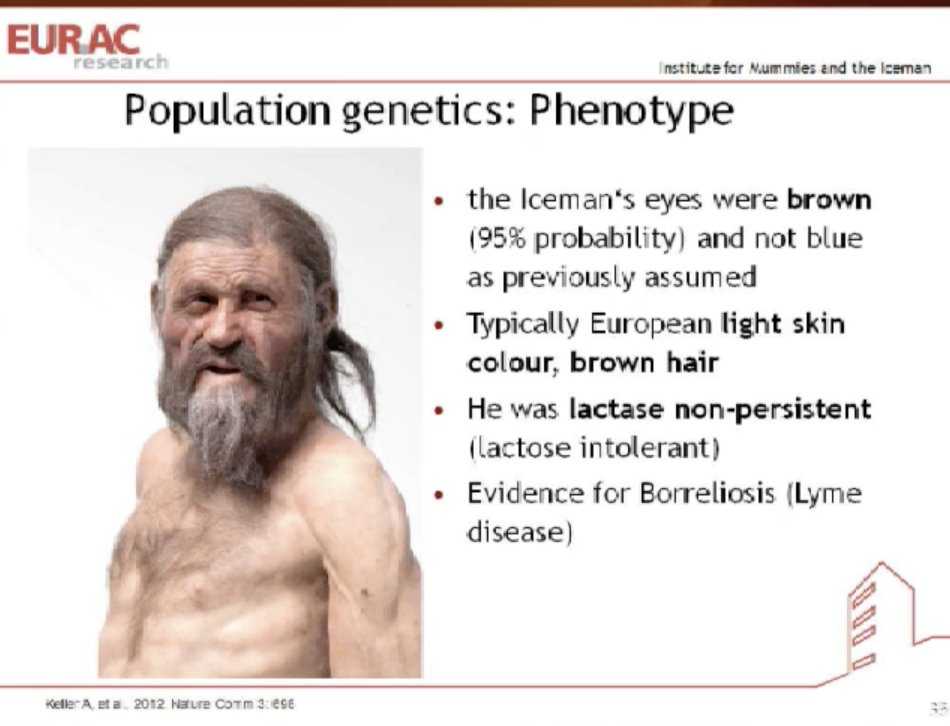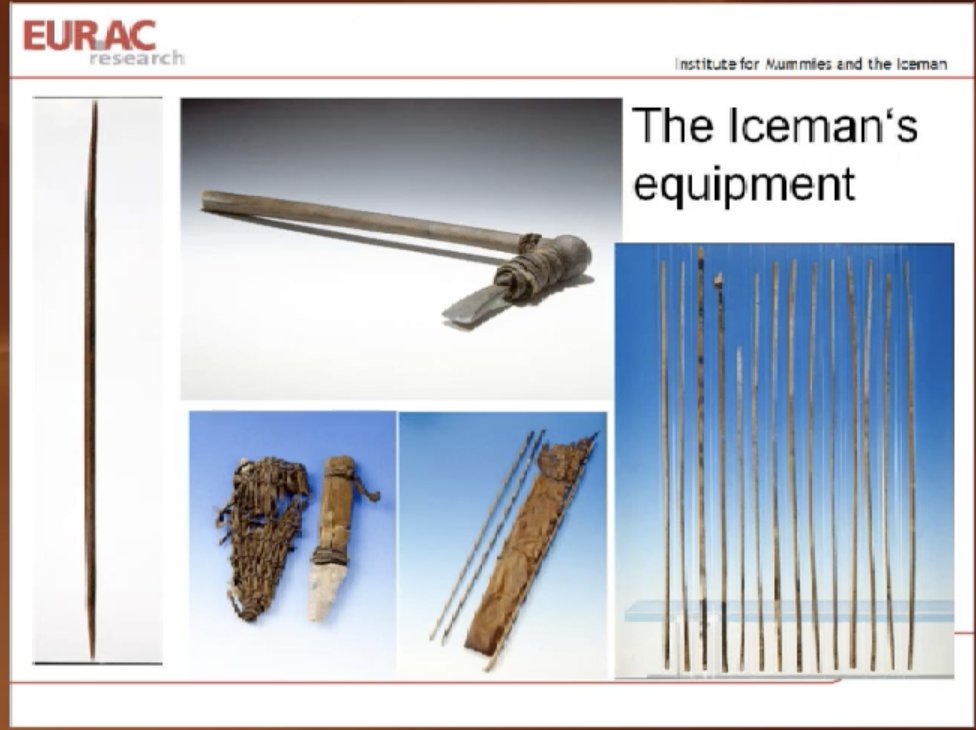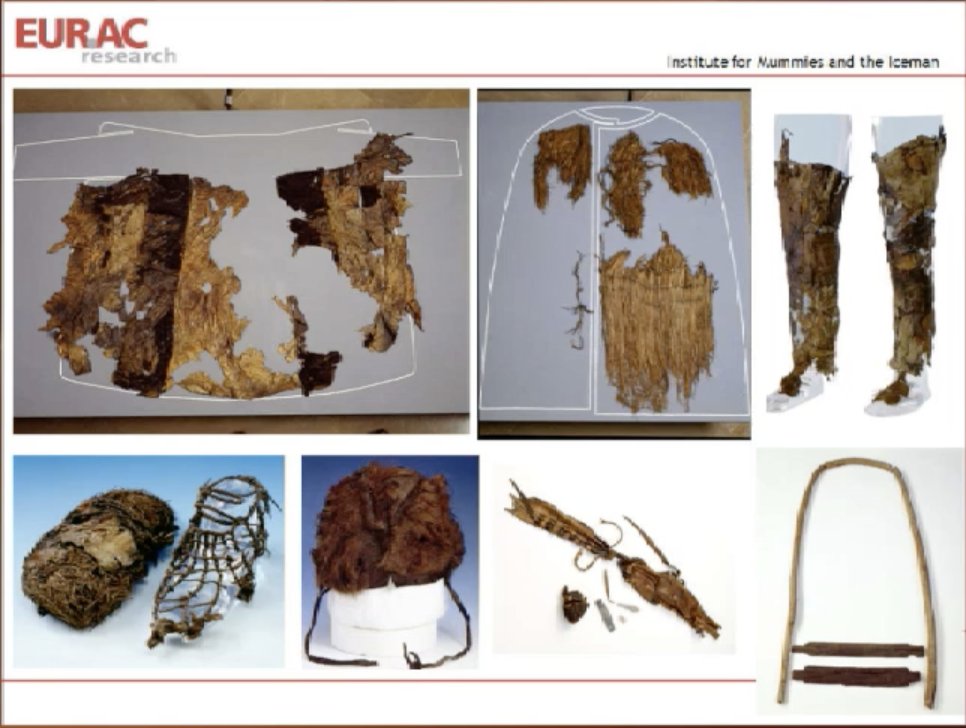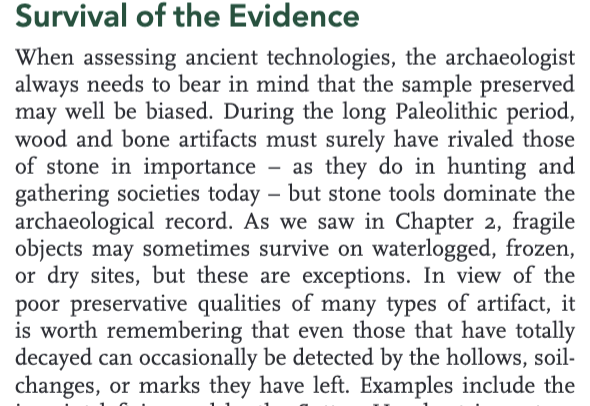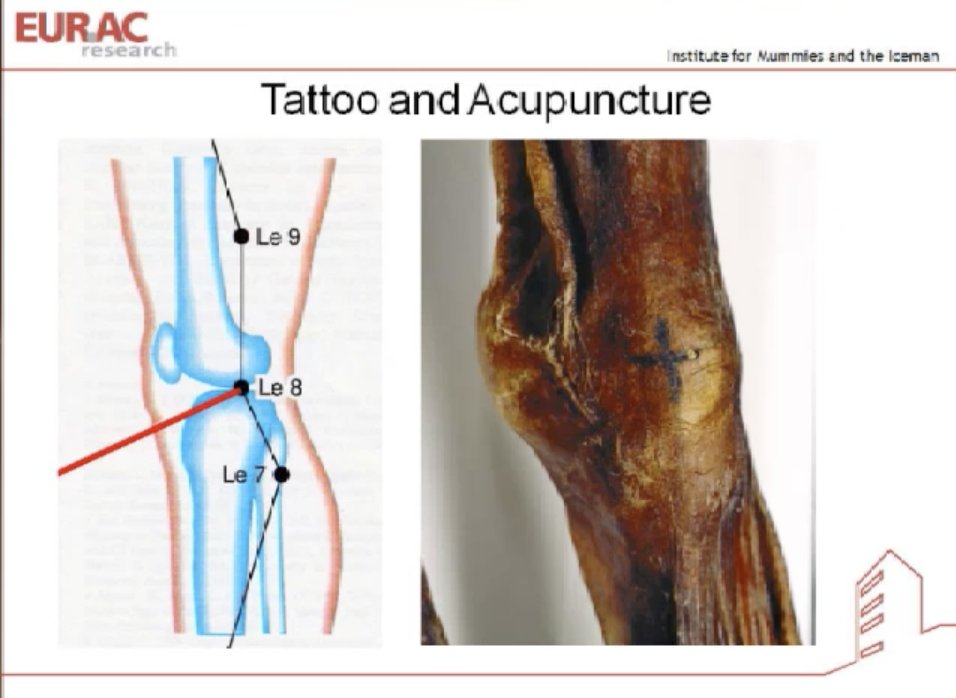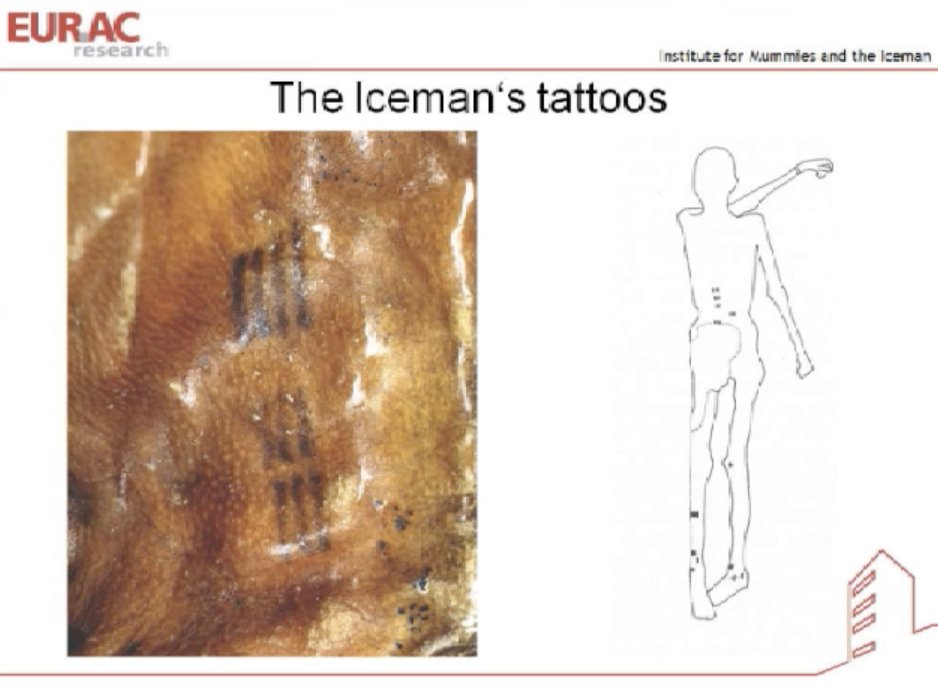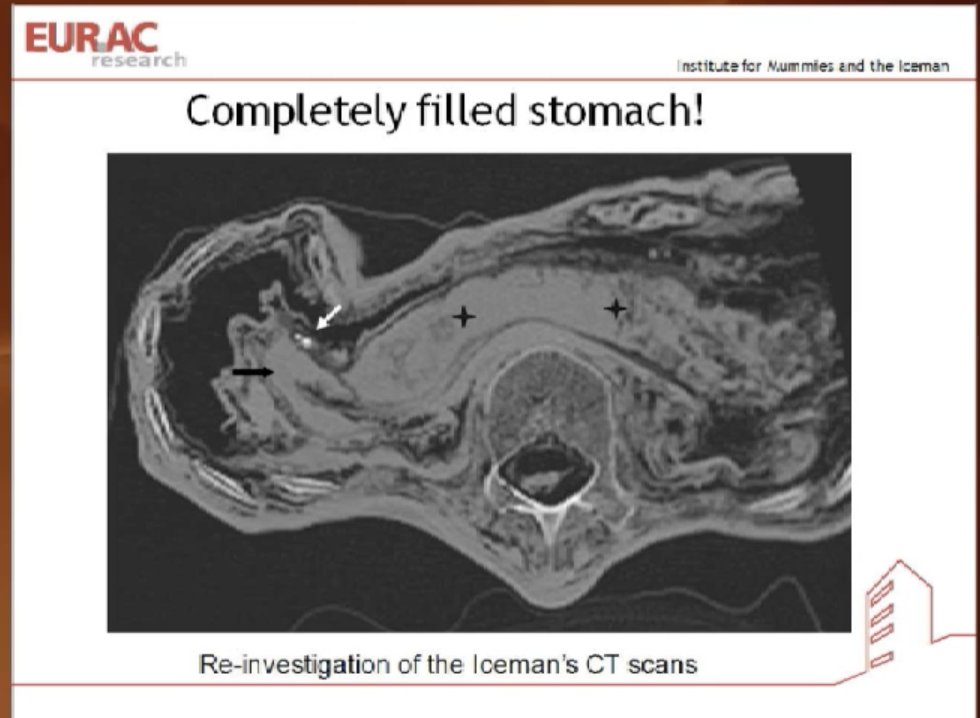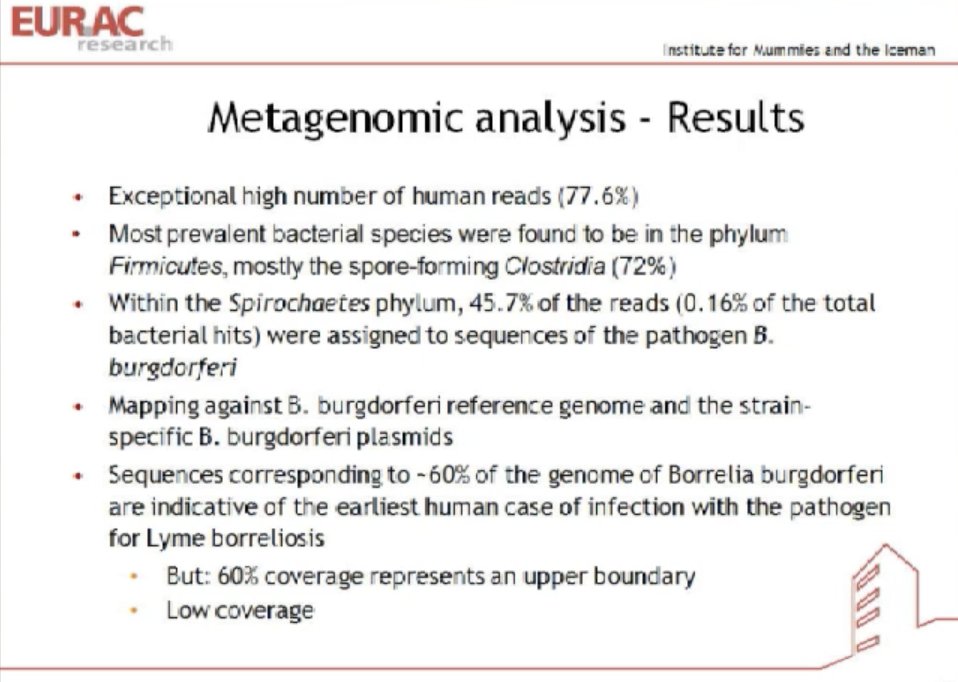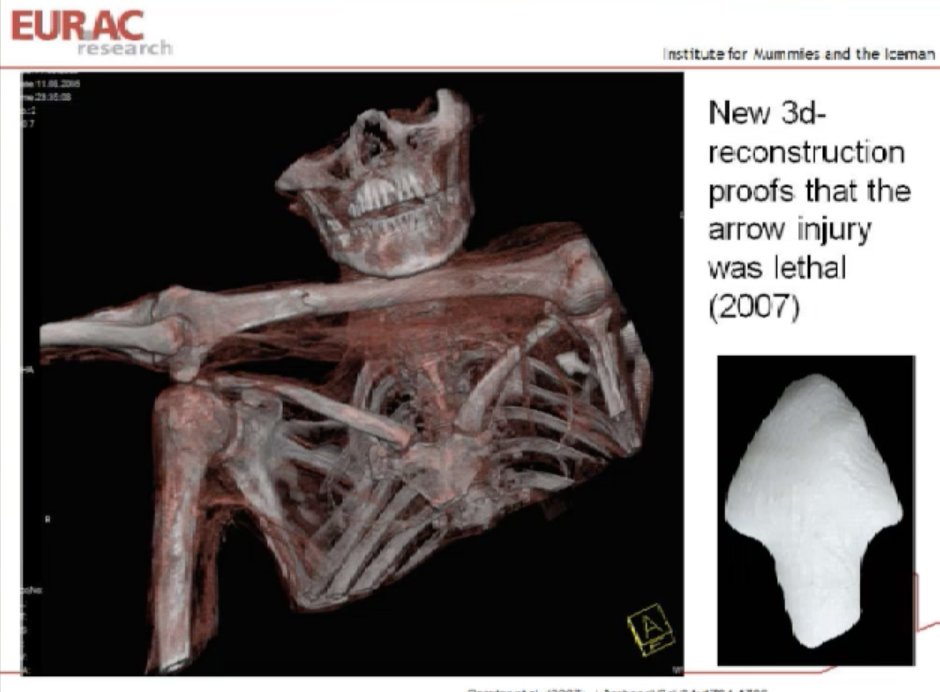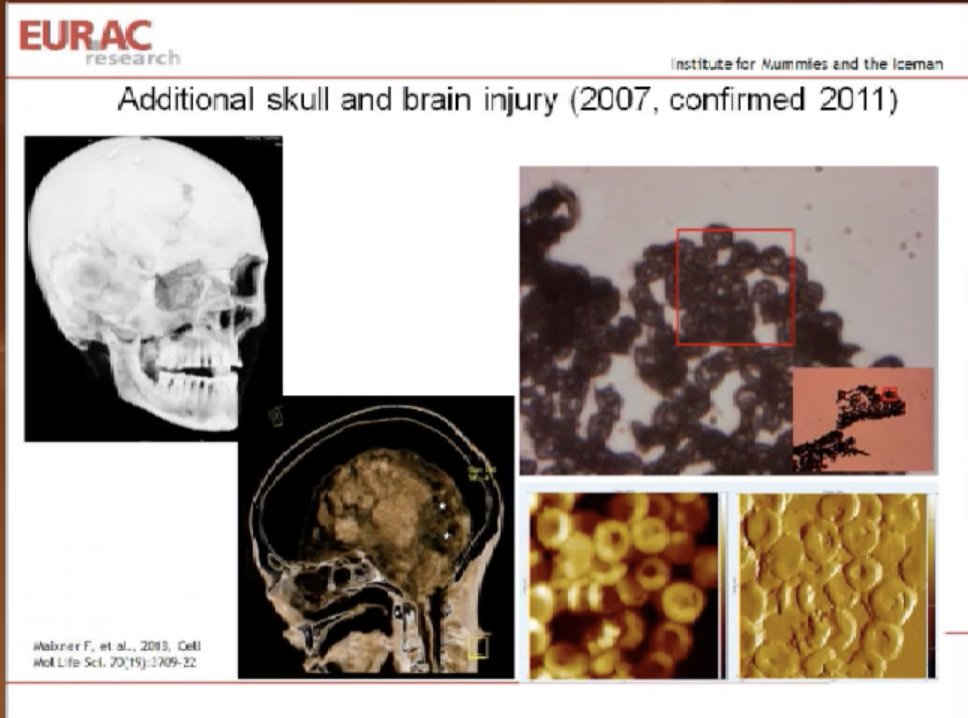In his lecture for the ASCSA, “Ötzi and Modern Mummy Research” (a), Albert Zink discusses the discovery of 5300-year-old Tyrolean Iceman, Ötzi. He assesses the findings from this remarkably well-preserved mummy and what it can contribute to studies of the period (~ 3300 BCE) #CYO2
Zink introduces the mummy, going through its timeline from the day it was found by hikers in South Tyrol in 1991. Ötzi is incredibly important because he is immaculately preserved, giving insights into the human movements of the era that would be otherwise lost to history.
Interestingly, there was a great quarrel between the governments of Italy and Austria about who had jurisdiction over this finding, and ultimately it was shown that the mummy belonged to the Italian side of the mountain.
The Iceman was found with a great deal of equipment beside him, also well preserved in the ice. In 1998, the Iceman was moved into a museum in Bolzano, Italy Where Zink and others ran many tests for his age (a), his physical state, his DNA, and on.
As I mentioned before, Ötzi is of great importance because as Zink explains, the archaeological record is terribly limited in information about this time. (a)
The Iceman provides evidence of humans who did not migrate to but are actually from his region in Eastern Europe, which was previously thought to be unpopulated until about 3000 years ago (Ötzi was there 5300 years ago).
Not only does his DNA analysis provide evidence for population genetics, but also for his phenotype/physical appearance and disease, as Zink discusses (a).
He shows evidence of pathogenic diseases such as cardiovascular disease, diabetes, and hypercholesterolemia.
He shows evidence of pathogenic diseases such as cardiovascular disease, diabetes, and hypercholesterolemia.
Ötzi& #39;s equipment was also well-preserved--a new bow, 2 arrows, and a copper blade axe. These contribute much to the archaeological record for his time; copper had been previously believed to originate at around 2000 BCE (a), but here he presents evidence of it from 3000 BCE.
The limitations in the archaeological record are quite drastic. As is described in Renfrew and Bahn’s “Making and Using Tools”, the samples for different time periods may be biased based upon what is available to us in the archaeological record (b).
For example, (b), stone materials dominate the archaeological record, but may not have actually been the most ubiquitous tool of the time, they are simply the most well preserved. Similarly, Ötzi’s preservation is astonishing and provides an incredibly rare insight into his time
Tests on Ötzi and his equipment are integral to filling in these holes in the archaeological record, and Bahn and Renfrew help to really highlight the rarity and the brilliance of this find for the future of archaeology.
Just think, we make many conclusions about the lives and movements of people in the past, that, similar to the effect of evidence of Ötzi’s existence in the Italian Alps 5300 years ago, can be blown away with just one piece of preserved evidence from the period.
ZInk tells that Ötzi shows evidence of arthritis and a common intestinal parasite, but this is not evidence of weakness or bodily disease. He is very well adapted to his mountainous home.
Interestingly, he has small, linear tattoos in the places where he would have experienced arthritic pain, showing that perhaps these people used a type of acupuncture to alleviate pain.
Zink was also able to explore the contents of the iceman’s stomach, showing evidence that he has eaten a huge meal of meat with high-fat content. Analysis of his DNA also showed that he was lactose intolerant and that he had Lyme disease, as Zink tells.
These little details seem trivial, but this is from the mummified corpse from over 5300 years ago! It is absolutely shocking that we are able to take such information from what should be dirt and bones.
The first time I learned about Ötzi was in a tenth-grade social science course, in which the iceman is used as an example of early human nature and violence.
It was found that Ötzi was killed by an arrow to a major artery in his shoulder, and he sustained a fatal brain bleed (either from falling or from another blow to his skull) (a). The violence of Ötzi’s death is a window into early civil/interpersonal interactions.
Everything from the iceman’s DNA, contents of his stomach, cause of death, to pain and tattoos provides vital information about population genetics, human movement, and cultural practices of eating and medicating that contribute to today’s world and to the archaeological world.
Zink highlights how the evidence of cardiovascular disease and diabetes in this lean, well-trained healthy Iceman can help us reassess the risk factors and circumstances of those diseases in modern medicine.
Additionally, the ability to preserve and study the iceman provides great insight on human activity in the copper age with everything from his last meal to the nature of his death.
(a) Albert Zink presentation for the ASCSA "Ötzi and Modern Mummy Research-the life and death of the 5300 year old Tyrolean Iceman" https://vimeo.com/81977283 ">https://vimeo.com/81977283&...
(b) Colin Renfrew and Paul Bahn Archaeology Theories, Methods, and Practice "Making and Using Tools" pg 317
#CLST6 #CYO2
(b) Colin Renfrew and Paul Bahn Archaeology Theories, Methods, and Practice "Making and Using Tools" pg 317
#CLST6 #CYO2

 Read on Twitter
Read on Twitter